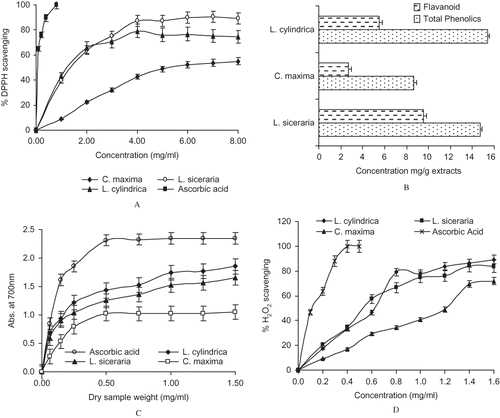Figures & data
Table 1 Scavenging activity of the aqueous cucurbit extracts
Figure 1 (a, c, d) Represents the scavenging effect of aqueous extracts of cucurbits on DPPH radicals, reducing power, and H2O2 scavenging capacity. Ascorbic acid was used as standard. (b) Represents the total phenolic and flavanoids content in the aqueous cucurbits extract. TPC are expressed as gallic acid equivalents, whereas flavonoid contents are expressed as quercetin equivalent. The values are expressed as mean ± standard deviation (n = 3).

